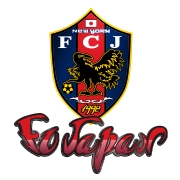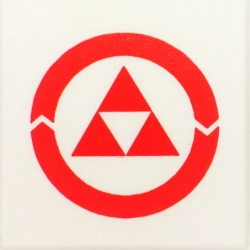Info Type
View Option
Sort by Month
Sort by Category
Back
This text has been translated by auto-translation. There may be a slight difference between the original text and the translation. (Original Language: 日本語)
2024/6/28 - 2024/7/19 / New York City (Diamond District), New York / Other

| Venue | |
|---|---|
| Address | 145 West 57th Street, New York City (Diamond District), New York, 10019 USA |
| Date | 2024/6/28 - 2024/7/19 |
| Time |
- [Time detail]
Mon - Fri : 10:00 am - 6:00 pm, Sat : 10:00 am - 5:00 pm, Sun ・ closed on holidays
- [Getting here]
Subway
5 min walk from 57th Street Station on F Train
N ・ Q ・ 3 min walk from 57th Street Station on R Train
A ・ B ・ C ・ D ・ 7 min walk from Columbus Circle Station on 1 Train 7 minute walk from
B ・ D ・ 10 minute walk from 7th Avenue E train station
- [Venue detail]
Map : https://goo.gl/maps/ChcpgDcR6CjSDemH8
Nippon Club Special Exhibition "Evolving Hinamatsuri of Hitachinokuni and Craftsmanship" Exhibition


- [Contact]
- gallery@nipponclub.org
- [Registrant]The Nippon Club
- [Language]日本語
- Posted : 2024/06/14
- Published : 2024/06/14
- Changed : 2024/06/14
- Total View : 534 persons
- Find local business with Town Guide
-
- Roger Algaze, a New York immigration att...

-
Immigration attorney with over 35 years of experience handling H1-B, O1, J1, marriage and employment based green card applications, Labor Certification Applications (, Labor Certification Applications...
+1 (212) 724-5643Algase Roger
-
- The Japan Club is a members-only social ...

-
The Japan Club's hall is a relaxing, satisfying, and comfortable space prepared for its members. In addition to a restaurant where you can enjoy seasonal Japanese cuisine, the club is equipped with l...
+1 (212) 581-2223The Nippon Club, Inc.
-
- Physical Therapy Clinic + Wellness Cente...

-
Physical therapy clinic located in front of Grand Central Station in Midtown. Services in Japanese. Overseas traveler's insurance and out-of-network medical insurance are available. We provide root ...
+1 (212) 695-2769Orthopedic Movement Physical Therapy + OMPT ウェルネスセンター
-
- We offer the popular mochi donuts and fr...

-
Kai Sweets offers pork cutlet curry, omelette rice, hot and iced drinks, tapioca tea, macaroons, strawberry daifuku, cream puffs, crepes, and other sweets. 2019, mochimochi Kai Sweets will also start ...
KAI SWEETS
-
- Japanese Daycare ! Japanese Daycare in P...

-
We are looking for preschoolers ! Established in 2015, we are a Japanese Daycare located in Brooklyn ・ Park Slope. Enrollment available for children as young as 3 months old. Childcare in Japanese. C...
+1 (917) 428-5151Yoko's Daycare
-
- It is a comprehensive medical facility e...

-
Japanese style medical checkup in Manhattan, medical checkup campaign underway -Reception~Diagnosis - All services in Japanese
+1 (212) 365-5066J Medical(My Medical Care PC)
-
- Do you need help with your daily account...

-
We hope to be a more familiar presence where you can consult with us about any matter, no matter how small. Please feel free to contact us. Do you have any of the following problems ? ・ You are unf...
+1 (917) 686-1003Booksavers, Inc.
-
- Eight Turn Crepes offers delicious glute...

-
100% Gluten Free Crepes The best feature of Eight Turn Crepe is that we use gluten free rice flour ! We make our dough with gluten free rice flour for more customers to enjoy. Breakfast ・ Lunch ・ ...
+1 (929) 358-7988Eight Turn Crepe
-
- New York ・ New Jersey Family Practice. P...

-
For those who have left Japan and are living in the U.S., the most worrisome and important thing is the health of themselves and their families. Located in New Jersey, our clinic offers a full range o...
(201) 581-8553Hibari Family Medical
-
- Established in 1983, we are the only New...

-
We have a complete treatment system in collaboration with two full-time psychotherapists and a psychiatrist, and we can also prescribe medication for those who need it. The Japan-America Counseling ...
+1 (212) 720-4560Hamilton-Madison House, Japanese Clinic
-
- We offer Japanese techniques and careful...

-
We offer Japanese techniques and carefully selected chemicals that are good for your hair and scalp, even though we are located in New York. We would like to take this opportunity to let more people k...
+1 (646) 912-9644Aube Beauty Salon New York
-
- " Voted No.1 Assisted Reproductive Techn...

-
MARG ( Miracle ・ Angels ・ Reproductive ・ Group/Miracle Angel Reproductive Group ) is a company specializing in women's reproductive health, researching assisted reproductive technologies in the US, Ja...
+1 (949) 623-8331Angels Creation Reproductive Center Inc
-
- Founded in 1992, the largest Japanese so...

-
Every Saturday morning at East River Park, they work up a fresh sweat and represent Japan against the world in the COSMOPOLITAN SOCCER LEAGUE 2nd Division on Saturdays or Sundays during the season. ...
FC Japan NYC
-
- Please feel free to contact us for anyth...

-
SAEILO MOTORS has been in the auto repair business for over 45 years and has built up a solid track record of trust and success. With our wealth of experience and the skills we have cultivated over th...
+1 (201) 840-0010Saeilo Motors
-
- Japanese school located in New Jersey an...

-
・ Early Childhood ・ Stable basic education through integrated elementary education ・ Small class sizes and a family-like atmosphere for growth and learning ・ A lively education with dedicated teache...
+1 (201) 947-4832ニューヨーク育英学園 Japanese Children's Society










Generally, Hina Dolls are displayed once a year on the Joushi-no-Sekku holiday to pray for the health and growth of girls, but "Hina Doll" breaks this stereotype. These Hina Dolls can be enjoyed all year round by people of all ages and genders, and by continuing to display them, one can wish for the health and happiness of the family.
In this exhibition, "Hina Dolls" clad in "Yuki pongee", which is registered as a UNESCO Intangible Cultural Heritage, "Nishijin brocade" from Kyoto, and antique lace from France will be displayed and shown how to decorate them according to ceremonies and events. In particular, the "Hina Doll" dressed in a kimono tailored from the same fabric as the Yuki-tsumugi silk kimono worn by the Empress Shang-Ho is one of the highlights of this exhibition.
In addition, large props such as screens, stands, and lights ・ are made by local craftsmen, including "Suzumo Chochin / Mizufu Chochin," "Nishinouchi Washi," "Kasama Washi," "Ohko Lacquer," "Kana Ryokishi," "Paulownia Work," "Kumiko," etc. Original works by these master craftsmen will also be on display.
◇ Contents of Exhibition ◇
1. Katsura Hina doll ( Katsura Hina doll ) :
Displayed in a traditional way, but also as interior decoration that can be enjoyed by all ages, nationalities and places ・. Hina doll as art is presented.
In addition, we will exhibit "Kasane Frame" by Mr. Kosahata, which was born from the fusion of traditional culture and art. The exhibition will also feature "Kasane Frame," a wall-hanging artwork by Kosahata, which is the result of a fusion of traditional culture and art, and features textiles in traditional Japanese colors ・, such as the "kasane-iro-meshi" used in the juni-hitoe (twelve-layered kimono), the favorite of Heian-period nobles, and traditional European fabrics, which are incorporated not only into the Hina Doll costumes, but also into "Kasane Frame. Kasane Frame" is a framed piece made of traditional fabrics from Japan and abroad, with an attack of color in the center. This work is much appreciated as an interior artwork that fits in any place, and is a symbol of the beauty of Japanese culture.
2. Artisans' Art Corner :
- Honjo Yuki Pongee ( Keiko Hanada ) , Nishiuchi Washi paper ( Daisuke Kikuchi ) , Suzumo Chochin / Mizufu Chochin (MIC ・) Itaya/Suzuki Ryutaro), Kana ryogami ( Hisashi Komuro ), Ohko urushi ( Tohru Tsuji ), Kasama-yaki ( Hiroyuki Onuki ), Kiri work ( Toshihiro Akiyama ), Ibaraki Kumiko ( Katsutoshi Adachi ), etc. works will be exhibited.
◇ Profile of the Master ◇
1. Takao Kosahata ( KATSURAHINA 3rd generation ) :
Born in 1972 in Ibaraki, Japan, in 1995, he became the founder of Katsura Hina ・ and the grandfather of Katsura Hina Kiho I
2. Ryutaro Suzuki ( 7th generation of Mohei Suzuki Shoten ) :
Inherited the Suifu lanterns established in 1865 and collaborated with artist ・ Mick ・ Itaya to create "Suzumo Chochin". Suzumo Chochin" was born.
3. Keiko Hanada ( Yuki pongee ) :
After graduating from Otsuma Women's Junior College in 1970, she moved to Yuki City, Ibaraki Prefecture. Together with her husband, she established "Yuki Hanada" and produces works that blend into modern life using Yuki-tsumugi silk.
4. Mick ・ Itaya ( Visual Artist ) :
Graduated from Tama Art University in 1976. Won the Good Design Award in 2012 for his design of the Japanese lighting fixture "Suzumo Chochin".
5. Hisashi Komuro ( Kana ryogami studio ) :
Inheriting the tradition of decorated kana ryogami from the Heian period and creating modern "kana ryogami.
6. Toshihiro Akiyama ( Third generation of Yamakiya of paulownia chests ) :
Established in 1945. Today, together with his father, he is involved in all aspects of chests of drawers, from design to manufacture.
7. Katsutoshi Adachi ( The third generation of Adachi Kengu Corporation ) :
Born in Ibaraki Prefecture in 1964. Selected as a "Contemporary Master Craftsman" for his Kumiko technique and awarded the Medal with Yellow Ribbon in 2022. He is also making efforts to nurture younger generations.
8. Daisuke Kikuchi ( Nishinouchi Washi ・ The fourth generation of the paper village ) :
He has been in the family business since 1972, producing strong and elegant Japanese paper using traditional techniques. We also produce items that meet modern needs.
9. Hiroyuki Onuki ( Kasama Pottery ) :
After graduating from the design department of Tokyo Zokei University, he established his own pottery in Kasama. He produces colorful floral motifs and whiteware, and has held solo exhibitions in Japan and abroad.
10. Tohru Tsuji ( Ogo Lacquer ) :
In 2010, he established Ogo Lacquer Yagou Nuri "Kiki Jian". Planting lacquer trees and producing lacquer consistently, they have produced Ise Shrine treasures and received many awards.
◇Katsura Hina III : Words from Takao Osahata◇
"I began making Hina dolls because I was fascinated by the unique colors and patterns of Japan, which have long been considered a symbol of the Japanese spirit. One of the most straightforward expressions of this fascination is the hina doll. Her life's work is to create hina dolls that can be enjoyed all year round as interior art, and "Kanane in the Frame," a series of "kanade in the frame," which expresses the layered hues of the Japanese traditional clothing, such as juni-hitoe.
We look forward to seeing you there.
Organizer : The Japan Club
Sponsors : J.C.C. Fund, Sekiaki Shoji, Secom, Seibu Shinkin Bank, General Incorporated Association MFU
Cooperation : Ibaraki Prefecture Sales Strategy Department, Craft Art Gallery ( Sekiaki Shoji ), Senken Shimbun
Curator : Mie Tsunobu
Photo 1 : "Green Mountain"
Wearing the costume of genuine Yuki silk, a world cultural heritage, on the first Hina dolls. The inside costume of the female doll and the folding screen behind her were inspired by the original scenery around the studio with rabbits running around in the field. This work was presented to the Emperor Ima-no-Mikoto.
Photo 2 : "Sea bream doll : Red Scarlet ( Kurunai Hiiro )"
This doll is dressed in a yuzen-dyed Tango crepe outfit on top, with scales of sea bream in a bold composition of red scarlet, which represents the breath of life. This pattern was used in the Edo period (1603-1867), when men dressed up in fancy clothes with fancy backs of their kimonos due to the prohibition of extravagance, known as "Urakatsuri no aesthetics".
Photo 3 : "FISBA Dragonfly : Medium"
Hina doll dressed in silk by FISBA of Switzerland. The dragonfly pattern is woven over a cobblestone pattern and then covered with silk organdie to create a unique coloring. A Christmas scene was created.